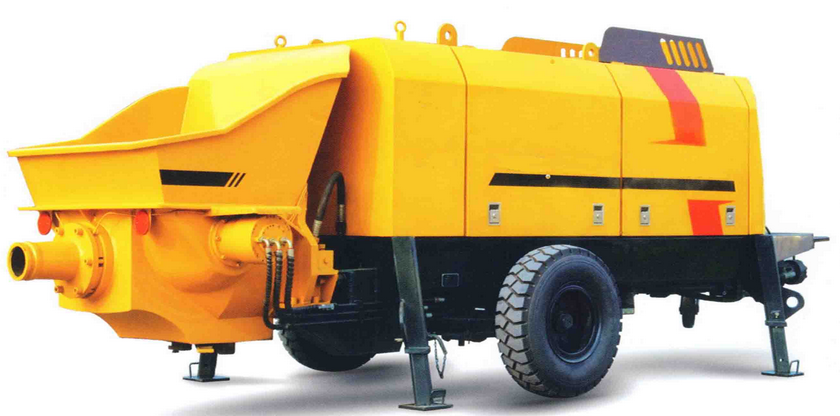The hydraulic concrete pump operation begins with the discharge of concrete from a ready mix vehicle into a hopper large enough to contain fresh supply of the concrete. An agitator keeps the fresh concrete flowing smoothly into the pumping cylinders. A hydraulic concrete pump works the same way like a twin-cylinder reciprocating engine whereby one cylinder sucks in concrete from the hopper and another one thrusts it on the forward stroke into the line. The pistons driven in the cylinders are powered by a hydraulic pump.
Concrete from the two cylinders are able to discharge into one pump line due to synchronized valves. These valves differentiate one pump from the other. http://concretemixerpumps.com/ is a website contains various types of concrete pumps, it is worth having a look at.

Valve Types
Gate Valves made up of two separate valves, one in control of flow from the hopper and the other one in control of flow from the line. The arrangement of the gates is such that the piston on the return is connected to the hopper while the gate to the pump line is closed. The gate to the line opens and the gate to the hopper closes during the forward stroke, enabling the concrete to be thrust into the line. Get details here: http://concretemixerpumps.com/hydraulic-concrete-pump/.
Rock Valve
Hydraulic concrete pump rock valve is a single element that hinges in such a manner that the intake cylinder is always open to the hopper and the pressure cylinder is connected with the line. In the event of the return stroke of the thrusting piston, the rock valve hinges to the intake cylinder, exposing the face of the intake cylinder to the hopper. The rock valve hinges to connect the pumping cylinder with the line after the piston reaches the end of its stroke.
Swing Tube
A single bent tube positioned in such a way that during the return stroke the intake cylinder is open to the hopper and the piston on the forward stroke is connected to the line. When the reverse happens, the swing tube bring into line itself with the pumping cylinder.
Ball Valve
A hydraulic concrete pump has two balls for each cylinder. One ball located between the hopper and the cylinder opens when the intake cylinder sucks concrete from the hopper, allowing concrete to pass. Meanwhile, the same suction brings the other ball to the pump line, closing it off. Equally, when concrete is being pushed by piston out of the cylinder, the ball of the hopper closes and the one to the pump line opens. This allows flow of concrete to enter the pump line. The two cylinders operate in harmony—one filling while the other pumping. Compared with concrete pump with mixer, the latter is more convenient to use, you can see detailed info here if you are interested: http://concretemixerpumps.com/concrete-mixer-pump/.